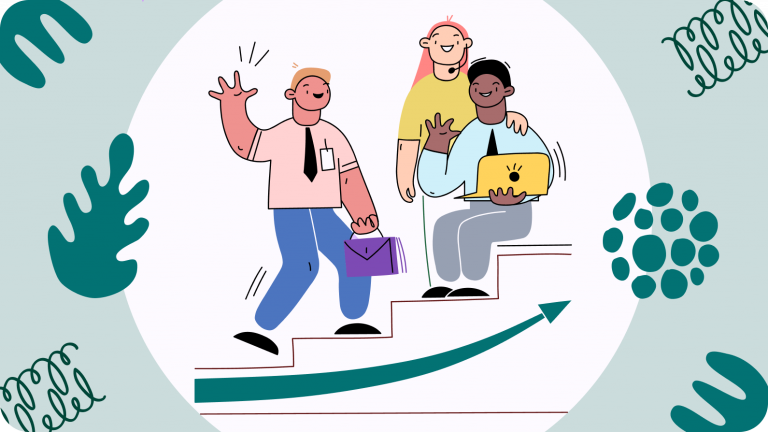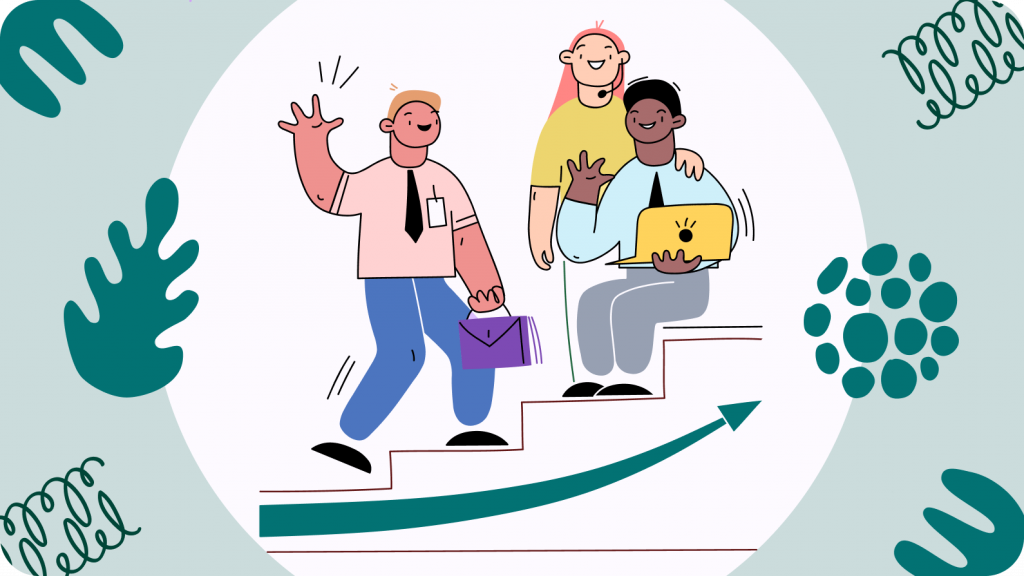By Dr. Justin Kennedy
The Social Brain in Action
Let me take you back to my first day of college. It was a terrible day! As a freshman, at the local pub, I tried to mingle but knew no one and so felt completely out of place. My pupils dilated, my heart raced, and my palms were so sweaty I held my beer with two hands. Every attempt at starting a conversation felt like a social tsunami. Little did I know, my brain was working against me.
My amygdala, sensing potential social threats, was flooding my system with stress hormones like cortisol. This response was part of my brain’s fight-or-flight mechanism, preparing me to either escape or confront the situation. Meanwhile, my prefrontal cortex, responsible for logical decision-making and social behavior, was struggling to maintain composure amidst the stress. The decrease in dopamine levels, essential for reward and pleasure, made me feel even more disconnected and anxious.
This complex symphony of chemical and neural activity, including reduced activity in my default mode network responsible for self-referential thoughts, shaped not only my social interactions but my overall experience of the world. I felt doomed.
Are You a Mind-Reader or a Brain-Reader?
Are you a mind-reader? Mind-reading involves interpreting thoughts and emotions based on observable behavior, while brain-reading delves into the underlying neural mechanisms that drive those behaviors. By examining both perspectives, we can gain a deeper understanding of human interaction and improve our social intelligence.
The Neuroplasticity of Social Interactions
As a professor of applied neuroscience and as a Neuroplastician, in a non-clinical practice as a coach I have a profound appreciation for the brain’s ability to adapt and change. The brain’s staggering number of neuronal connections— and our advanced neuroimaging tools reveal its remarkable complexity. However, these marvels often overshadow a crucial aspect of brain function: its remarkable capacity for social adaptation and change in response to others.
Imagine meeting Max, a client intrigued by the idea of neuroplasticity but skeptical about its real-world implications beyond brain mechanics. As a Neuroplastician, I often encounter such skepticism, rooted in the view of the brain as a mere machine.
Stories of Social Neuroplasticity
“So, are you saying my brain can change just by interacting differently with people?” Max asked, leaning forward with a mix of curiosity and doubt.
“Absolutely,” I replied with a reassuring smile. “Let me share a story to illustrate this.” recounted the tale of Emily, a spirited retiree who came to me seeking help after a stroke affected her speech and confidence. Emily loved her book club gatherings but found herself withdrawing due to difficulty in expressing her thoughts. In her coaching process we devised a plan that involved building active participation in non-stressful social activities. She spent time at the dinner table building up the power of her brain’s Broca area to feel confident speaking.
Weeks later, Emily returned with a sparkle in her eyes. “You won’t believe it! I started volunteering at a local library, reading to kids. It’s been challenging, but each week, I feel more confident. My speech is improving, and I feel more like myself again.”
Foundations of Social Intelligence
Max looked intrigued. “So, her brain changed because she engaged socially?” “Exactly,” I nodded. “Her brain rewired itself, tapping into its plasticity to accommodate and thrive in new social situations.”
Max grinned, now seeing beyond the mechanical view. “That’s incredible! It’s like our brains are designed to adapt to the social world around us.”
“Exactly!” I exclaimed. “Research on neuroplasticity supports this. The brain isn’t just a static machine; it’s a dynamic organ constantly reshaping itself based on our experiences and interactions.”
The Social Dynamics of Brain Health
As Max left, inspired by Emily’s story, I reflected on how understanding neuroplasticity isn’t just about grasping the mechanics but appreciating the profound impact of social experiences on our brain’s capacity to change and grow. After all, in the intricate dance of neuroplasticity, the melody of social influence plays a crucial role in shaping the symphony of our minds.
Are You a Brain-Reader?
A groundbreaking book in this field is “Social” by UCLA professor Matthew D. Lieberman. Lieberman reveals that our need to connect with others is even more fundamental than our need for food and shelter. He argues that social connection is the key to our success as a species and one of the reasons we evolved large brains in the first place. Lieberman and his colleagues have discovered that when our brain is not focused on a specific task, it uses its default network to learn about and master the social world (Lieberman, 2013).
Lieberman suggests that by the time we are ten years old, we have spent many hours learning to understand people and groups and our place in them, much like mastering complex skills such as chess, music, or math. This innate’’ social training’’ highlights the brain’s prioritization of social intelligence. Social pain and pleasure, as revealed by fMRI studies, impact our brains as profoundly as physical pain and pleasure. This finding explains why the most painful experiences in our lives often involve social losses, such as the death of a loved one or the end of a relationship (Lieberman, 2013).
The brain has evolved sophisticated mechanisms to secure our place in the social world. We possess a unique ability to “read” other people’s minds, discerning their hopes, fears, and motivations. This capability allows us to effectively coordinate our lives with one another, restraining selfish impulses for the greater social good. When this wiring malfunctions, as seen in conditions like autism, individuals face significant challenges in connecting with others (Lieberman, 2013).
Neuro-Nerd Deep Dive
Let’s dive deeper into how neurotransmitters influence our social experiences. Dopamine, for instance, is central to our reward system. When you experience something pleasurable, like a compliment or a hug, dopamine is released, making you feel good and encouraging you to seek out more of these positive interactions. On the flip side, serotonin helps regulate mood and social behavior. Low levels of serotonin are associated with social anxiety and depression, highlighting its role in our overall social well-being.
Neurotransmitters play crucial roles in social intelligence. Oxytocin, often called the “love hormone,” enhances social bonding and trust. Dopamine, the “reward hormone,” reinforces pleasurable experiences, encouraging social interactions. Vasopressin is linked to social behaviors, including pair bonding and aggression regulation. These chemicals illustrate the biochemical foundation of our social interactions and highlight the brain’s intricate design for fostering social connections.
Glutamate and GABA (gamma-aminobutyric acid) play pivotal roles in excitatory and inhibitory neurotransmission, respectively. Glutamate is the brain’s primary excitatory neurotransmitter, promoting neural activation and contributing to cognitive functions like learning and memory. GABA, in contrast, serves as the main inhibitory neurotransmitter, reducing neuronal excitability and preventing overstimulation. This balance between excitatory and inhibitory signals is crucial for maintaining proper brain function and navigating social experiences.
Interestingly, our brain’s default mode network (DMN) becomes highly active when we are at rest and not focused on the outside world. The DMN is involved in self-referential thinking, daydreaming, and recalling memories, all of which play a role in how we understand ourselves and relate to others. When we are engaged in social interactions, the DMN helps us interpret social cues and empathize with others, further illustrating the brain’s intricate design for social intelligence.
Harnessing Neuroplasticity for Social Well-Being
As a Neuroplastician, my work extends beyond the traditional boundaries of neuropsychology. I explore how the brain’s adaptive capacities can be harnessed to promote resilience and recovery in the face of neurological challenges. This approach underscores the potential for rehabilitation strategies that leverage neuroplasticity to facilitate recovery and improve cognitive outcomes.
For example, consider the role of excitatory and inhibitory neurotransmitters in shaping behavior. Excitatory neurotransmitters like glutamate drive us towards action and engagement, while inhibitory neurotransmitters like GABA help us avoid overstimulation and maintain balance. This dynamic interplay influences our ability to navigate social situations, highlighting the importance of a well-regulated neurochemical environment for social intelligence.
A Symphony of Adaptation
While the brain’s complexity and anatomical structures are awe-inspiring, they represent only a fraction of its true essence. Its ability to adapt, learn, and grow throughout life—from childhood development to aging—underscores its dynamic nature. The brain also has ‘social wings’. By embracing this paradigm shift in social neuroscience, we not only deepen our understanding of cognitive function but also recognize the profound impact of social context and interpersonal relationships on brain health and resilience.
Are you a mind-reader or a brain-reader? So, the next time you find yourself in a socially awkward situation, remember that your brain is hard at work, balancing excitatory and inhibitory signals, releasing neurotransmitters, and activating neural networks to help you navigate the social landscape. Understanding these processes not only enriches our appreciation of the brain’s capabilities but also highlights the importance of social connections in our lives.















